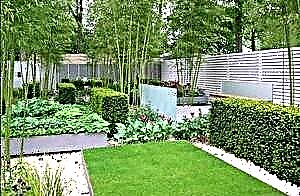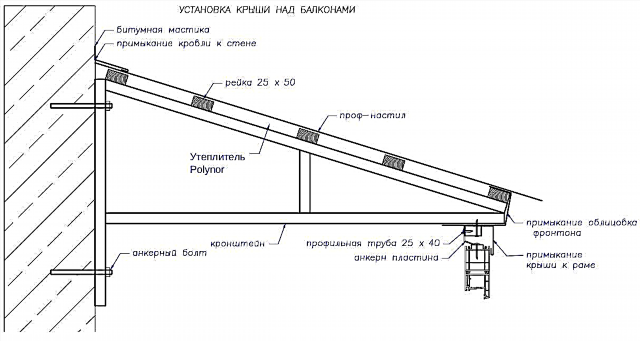Despite the wide range of models, it is sometimes difficult to choose furniture in the hallway. After all, the selected furniture should be compact, not clutter up all the free space.

An excellent option would be furniture made by yourself. The photo of a beautiful hallway shows that such products are no worse than purchased models. At the same time, you will save money, take into account the individual characteristics of the premises, your wishes.

It is important to be patient, to have at hand a set of necessary tools. If you are new to this business, then give preference to simple forms, models.
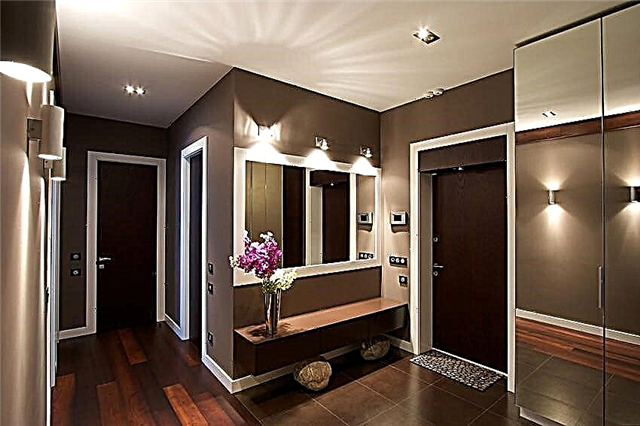
Using the simple recommendations of specialists, you will make a piece of furniture that will delight you with its quality characteristics and a presentable appearance.




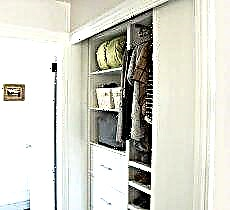

Summary of the article:
The working process
It is worth familiarizing yourself with the features of how to make a hall with your own hands. In the event that you have a small room, then give preference to those items that will not overload it. With a minimum number of square meters, you can use compartments designed to store outer clothing, shoes, as well as the items you need.
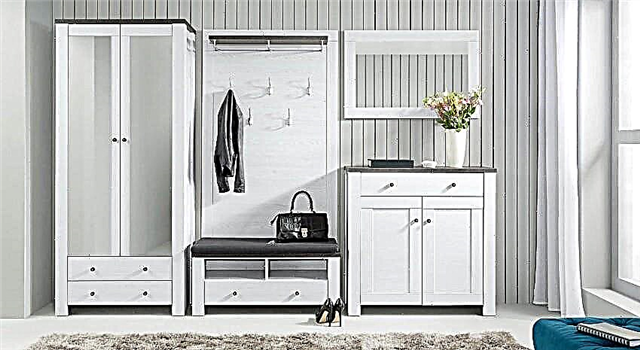
If you have a spacious entrance hall, then you can use a spacious cabinet. Depending on its parameters, the cost of the product is calculated.

An interesting and at the same time profitable option from the point of view of compact placement is a corner entrance. From a visual point of view, it looks smaller than it actually is. The use of this option allows you to put everything you need.
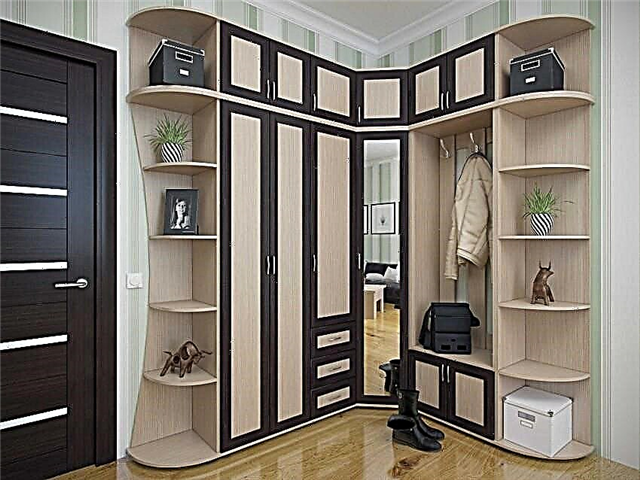
After defining the model, you need to take measurements, do accurate calculations. Prepare a set of tools that are useful during work.

Training
In order to make a cabinet in the hallway with your own hands, you need to take a set of tools. In particular, a saw, a jigsaw, a screwdriver, a construction knife. In order for the surface to be flat, smooth, use a thin section machine. Take the hinges, corners, furniture screws. To perform accurate calculations, you will need roulette.

You need to choose the right material. Experts often recommend using a furniture board for these purposes, explaining this choice with a natural component, the absence of synthetic resins.

The environmental component is of great importance, since the material is safe for the health of all family members. Among the shortcomings, a high price is allocated.



Another material that is used to make furniture, for example, a shelf hanger in the hallway, is chipboard.

Resins that are part of the material can negatively affect health. To minimize this risk, laminated boards must be covered with a piping.

The advantage of this choice is its low cost, excellent quality characteristics. The workflow itself is lightweight, effortless.

Closet
The finished product is not as complicated as it might seem at first. This is a special design, which involves the movement of doors along the body. There are built-in models, as well as stand-alone ones.

A classic model with side walls looks like this. Its size is 2020 * 625 * 2320:
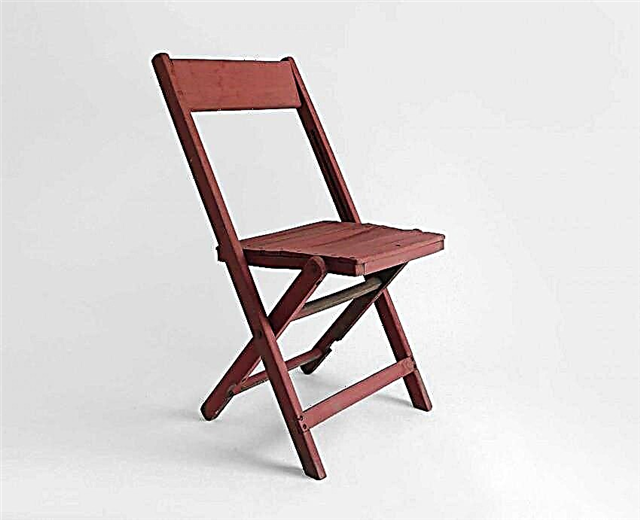

- side racks, their height is 2288 * 625,
- large parts 2020 * 625 mm, which are used as the lower and upper strips,
- vertical racks serve as a connecting link. The mounting height is 1900 mm, width 525 mm. Spare 100 mm helps the cabinet function better.

Such a product is filled with shelves in the hallway. But, besides them, it is necessary to leave a place for fixing systems. Often parts for internal filling of the cabinet are ordered in the workshop. Indeed, the cutting of finished elements is quite time-consuming, not all experienced craftsmen can perform such a task at home.

In order to assemble into a single whole structure, you should use screws, furniture corners. Install the rails in the internal part of the structure, for this, the designated area, that is, spare 100 mm, is suitable. After this stage is completed, you can proceed with the installation of doors.
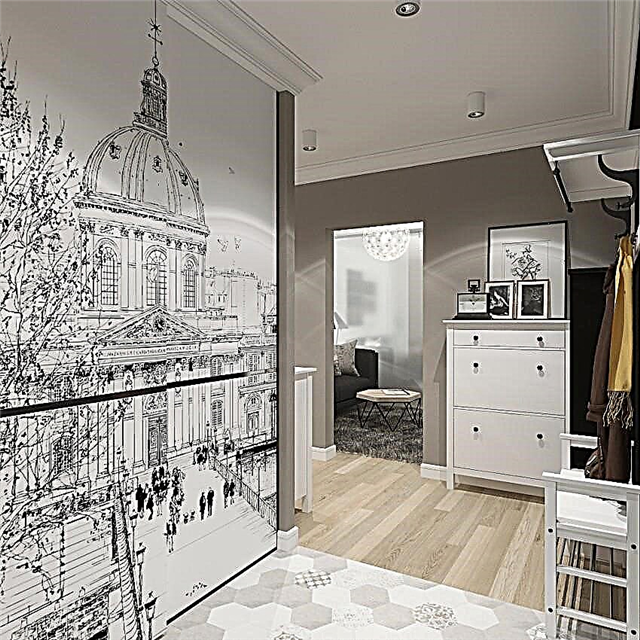
Note! Sliding wardrobe is an excellent piece of furniture with which you can visually expand the boundaries of the room.

To do this, use the door, on the outside of which there is a mirror. Advantageously emphasizes the advantages of the interior, as well as the entire environment, high-quality lighting.
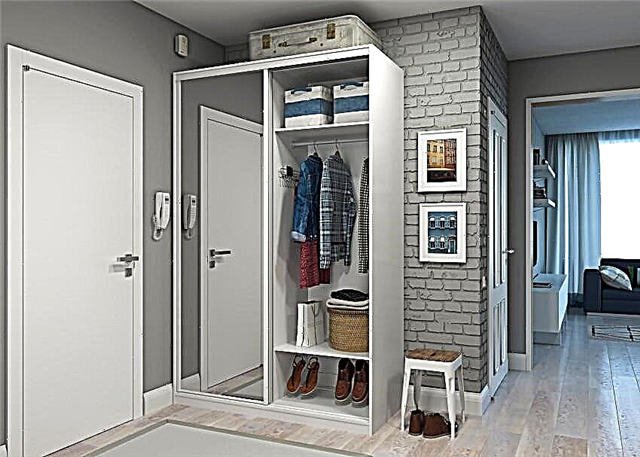
Conclusions
It is believed that the hallway is the face of the room. It is by its arrangement and appearance that we can conclude about the owner. Therefore, you should carefully consider all the details, equip with beautiful, practical and compact furniture.



Furniture size should be selected based on the parameters of the room. Most often, it is in this place that all outer clothing, shoes, and other necessary items are stored. Therefore, furniture designed for this should be as spacious as possible.
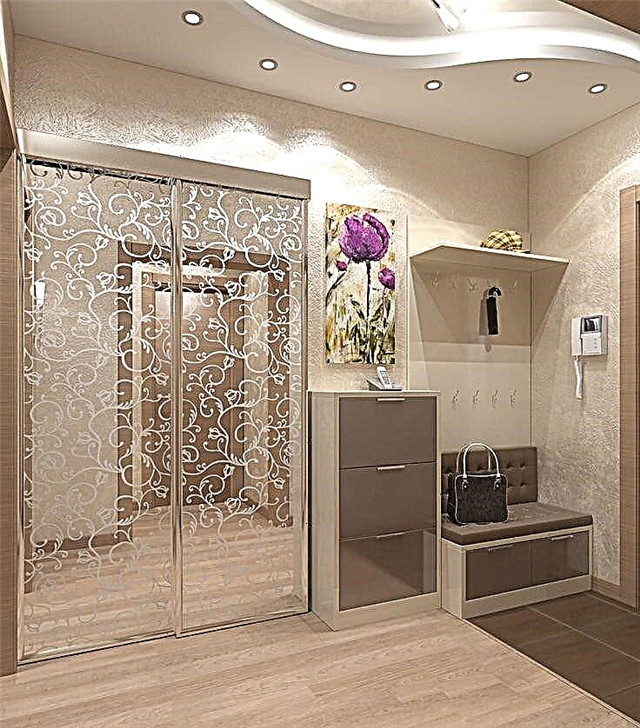
Furniture can be purchased, made to order, taking into account your own preferences. But, you can make furniture on your own. This option is budgetary, and the thing you have done will become a matter of pride, complementing your chosen style direction.
What to consider when choosing
- Moisture resistance - parts must not lose their properties when in contact with a wet raincoat or umbrella. Particular requirements are imposed on legs in contact with puddles from street shoes, because in winter, when snow falls into a raised sole, it is not always possible to remove it by tapping the boot on the floor. Shelves, which constantly put things on, quickly get dirty, and they often have to be wiped with a wet rag. It is desirable that their outer layer be completely impervious to water - otherwise it will begin to warp, and the inner base will collapse.
- Abrasion resistance. Doors and shelves are used constantly. They put bags with metal fasteners and decor, heavy food bags. A sharp buckle may scratch the surface. To prevent this from happening, the coating must be highly resistant to mechanical damage.
- Strength - often on the shelves store not only clothes, but also metal tools, or leave parts from the car, so they should not bend. If there are traces of the external coating with little pressure, it is best used for clothing or things that do not create a load.
- Resistance to aggressive environments - shoe sprays, cleaning products and other household chemicals are often stored in the corridor. When hit on the surface, they should not corrode the outer coating and leave indelible spots on it. Shelves and walls should be made of materials that tolerate cleaning using chemicals.

Material Options
- Natural array - workpieces do not differ in good performance. Their advantage is appearance, but veneer imitates it perfectly. Use natural pine or beech only when it is a matter of principle. The array is distinguished by low resistance to temperature-moisture deformations. Large parts bend and dry even under normal conditions. This is due to the fact that their fibers change the moisture content, evaporating in hot, dry weather, or absorbed from an atmosphere saturated with steam. Fibers are rotten. They must be dried for several days, and then impregnated with antiseptics and covered with a layer of varnish that protects against moist air and direct water. Unlike factory products, natural products have many defects. The quality is affected by the presence of knots and resin smudges. To assemble the entrance hall with your own hands from wood, it is better to use ready-made panels that have undergone the necessary processing.
- Particleboard - boards made of glue and sawdust. They have no defects specific to the array. Products do not change their shape with changes in temperature and humidity and do not differ in strength from natural ones. They are inferior in durability and hardness to oak and wenge, but such varieties are rarely used. Products coated with veneer or melamine paper are of good quality. They are not afraid of dampness and are resistant to chemically active substances. Workpieces do not need additional processing.
- Chipboard - laminated particle boards. They are distinguished by higher operational characteristics. They often finish walls, floors and ceilings in wet rooms. Laminate is a paper-polymer film. It provides a high level of protection against moisture and abrasion.
- MDF - panels of fine dried sawdust and a binder. They are laid in layers and molded by hot pressing. Products are stronger than analogues. They are more resistant to stress and damp, but they are much more difficult to handle. To cut the workpiece, it will take much more time and effort. The blanks are coated with melamine paper and veneer.
- Fiberboard (hardboard) - thin sheets for the back walls, not experiencing mechanical stress. It is easy to cut, fitting to the desired size. It tolerates wet cleaning well, and in case of wetting it does not lose its properties. Appearance does not matter when creating interior design. The back walls are usually hidden from view.
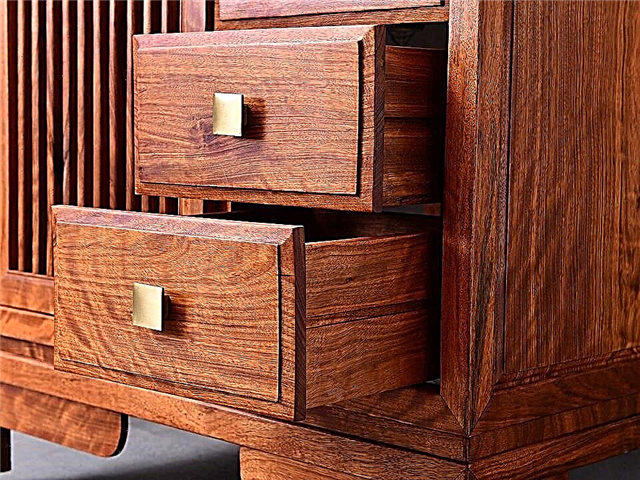
Chipboard finishing options
- Lamination - paper lacquered coating glued to the base of particleboard. Quickly deteriorates in rooms with high humidity. It poorly tolerates mechanical stress.
- Melamine paper (artificial veneer) - it is placed under a layer of transparent melamine resin, through which the pattern on the outside is perfectly visible. Resin is well tolerated by moisture and reactive substances. It has high abrasion resistance and is great for creating furniture.
- Lamination - applying a film of melamine resins, which increases the wear resistance by several times. There are two classes of coatings. Class CPL - smooth surface, class HPL - imitation of natural stone or wood fibers.
- Postforming - multilayer plastic trim. Often used for walls and countertops with rounded corners. In fact, it is a lamination in several layers.
- Veneering - gluing a thin sheet cut from an array onto the surface of a panel. Outwardly, the products do not differ from natural counterparts, while they are devoid of their main drawbacks. They are not susceptible to mold and retain their shape in any environment.

Calculations
The room is measured and plotted on a scale. You will need an image of the floor and walls. Cabinets, shelves, cabinets, hinged furniture, wall mirrors are drawn on the line in the diagram.
The length of the cabinet depends on the number of residents. At least 40 cm in width is relied on per person. The standard depth is 40-60 cm. The space is divided into zones for clothes, shoes, hats. The top is best adapted for things that are rarely used.
Filling is chosen after zoning. Shelves and drawers can be made by yourself. Metal parts - hooks, rods, nets - are bought or made to order.
You should consider the location and power of the spotlights of cabinet furniture. They must have switches. When laying wiring, it is forbidden to ditch load-bearing walls and ceilings. Canals can be laid in the finish.

Layout options
The arrangement and sizes of elements depend on the area and shape of the room. As a rule, the entrance hall includes a cupboard, a shoe cabinet, a seat - it is often combined with a cabinet, shelves and hangers, countertops or a chest of drawers.
The basis is a cabinet. The remaining elements only complement it. They can be moved and outweighed, but a huge building is created for a certain place where he will most likely have to stay forever.
Wardrobes are linear and angular, swing, compartment and open. The latter option is suitable for small rooms, in such models there are no doors and a case. The filling is fixed on the rear panel. Clothes are stored on shelves and hangers - floor or wall. Below you can make a countertop, under it - drawers or swinging boxes. The mirror is hung on a wall or placed above a chest of drawers or a table.
Sliding wardrobes save space - no need to clear the passage to open doors. On their front side there can be wide mirrors that visually expand the room, but now this move is not entirely relevant.

If there is not enough space, you can put one narrow column, taking the remaining meters with hooks, shelves and pedestals. This is exactly the solution we will consider now.
Necessary materials
We’ll make the case out of chipboard - such a solution is used quite often. We cut the back wall out of hardboard. As fasteners, we will use ordinary furniture screws. Professional joiners cut the grooves at the ends of the connecting parts and put them on glue. The connection is durable and more accurate. This requires skill. Work can be done, but it will take a lot of time.
Fittings:
- Corners.
- Hinges.
- A pen.
- Door Closer.
- Barbell for a coat hanger.
- Adjustable legs.
- Skids from the drawer.
- Holder for basket or bottom drawer.
Before you make a hall with your own hands, you should collect everything that is necessary for work. It is very inconvenient to do searches during assembly.
Advantages and disadvantages
Currently, almost anyone can do the design of the hallway on their own. You can buy in the stores a ready-made set of materials that you just need to assemble yourself at home. It is also permissible to order the manufacture of the necessary parts according to individual sizes and preferences. And if there is the opportunity and the necessary tools, then there is the opportunity to make all the components yourself. In any case, if you take on the manufacture of furniture with your own hands, there are pros and cons to this.


The advantages include:
- original design
- compliance of the furniture with the required dimensions with a minimum error,
- the cost of home-made furniture is several times less than finished,
- fascinating pastime.

The disadvantages of such design solutions are the following nuances:
- in the end, the product may not be as perfect as that purchased in a store,
- making furniture will take a lot of time and effort,
- a lot of dirt and dust will appear during the work, so the best option for the rest of the household is to be in a separate room at this time.


Necessary tools
In order to start the process of registration of the hallway, you should carefully prepare and stock up on everything you need. In addition to material or finished parts, will need to prepare:
- fittings (corners, hinges),
- pencil and tape measure
- necessary fasteners (screws, bolts),
- knife for construction
- sand paper
- a small saw or jigsaw,
- a screwdriver or an electric screwdriver,
- materials for decoration and decoration, if necessary.

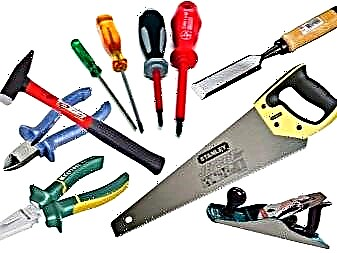
Also, pre-prepared drawings and diagrams will be needed in the work.
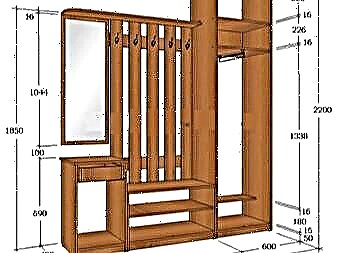

How to make at home?
Making a hall with your own hands is not as difficult as it might seem at first glance. Even a novice master can handle this. However, if there is little or no experience in creating furniture, it is better to start with simpler models.

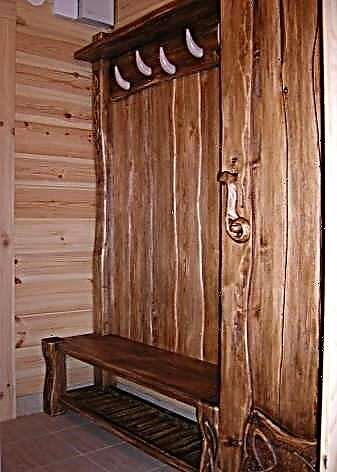
Before you get started, it is worth deciding on the desired model and size of future furniture. It is better to build on the dimensions of the room in which it will be located. You should not use all the space to the maximum. If the room is small, then there should be a little furniture. You can limit yourself to the standard set of compartments for jackets and coats, shoes and various little things.
This will be especially true for urban apartments.


If the hall is planned to be done in a private house or in the country, it is better to create a more spacious atmosphere. If space allows, a sliding wardrobe or even a small dressing room fenced with sliding doors is ideal for it. It is worth considering that this option will be somewhat more expensive. When deciding on the organization of the room, it is worth thinking about a seat where it would be convenient to put on shoes. For greater comfort, you can make it soft, for example, upholstering the surface with foam.

Choosing the right model, you can proceed to the next step - taking measurements. They must be removed with great care. On one plane, it is better to take several measurements in different places. Between two numbers, the choice should always be made in the direction of less. Do not forget about the necessary gaps. On each side for future furniture it is necessary to leave from 0.5-1 cm of free space.


Materials
For the manufacture of furniture, you can use a variety of materials:
- Chipboard is the most popular material. It is affordable, has a wide palette of various colors and is available in all construction stores. In addition, he is unpretentious at work. It is very convenient and simple to make furniture from it. When choosing a chipboard, special attention should be paid to the manufacturer and the quality of the product. In the manufacture of such materials, harmful resins are used as a bonding element. It is important that their content does not exceed permissible standards, and also that the edges of the slab are covered with a laminated edging,


- Wood is an environmentally friendly material. It is durable and has an exceptional appearance: it looks very presentable and solid. However, the cost is an order of magnitude higher than, for example, chipboard and requires the observance of special rules for personal care. During the construction process, it is easy to work with him, as he lends himself to almost all types of processing. Almost any structure can be built from the boards. This is the only material that can be left in its original form and not subjected to further processing,


- The best option for working with wood are furniture panels. They are already prepared in a special way, so that it remains only to cut out the necessary parts from them and proceed to the manufacture of the hallway.
Cut lines need to be processed independently,


- Plywood - very easy to process material. It has a low cost, strength, resistance to moisture, heat and other environmental factors, so it is very popular. For its manufacture, pine or birch veneers are used. Coniferous wood plywood has a very beautiful pattern and is most often taken as the basis of furniture. Birch wood is more expensive. It has a contrasting structure and turns monophonic,


- Drywall - an option more suitable for the construction of the dressing room. From it you can make any design and even a small new room. Even a beginner can build a structure, however, you need to carefully follow the instructions, and perform each action clearly in accordance with them. Drywall allows you to build a box even in an uneven room, smoothing out all the defects.
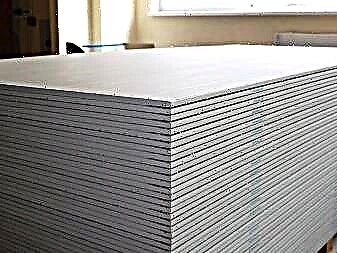

Using drywall, you can create both vertical and horizontal designs, which gives room for imagination for the decor. Another plus of this material is that with it you can mask any communications, and under the casing it is easy to stretch the wires and pipes between the profiles of the frame.
As the disadvantages of drywall, one can mention the low strength of the material. It is subject to deformation under the influence of moisture and external mechanical influences. In addition, the design itself with profiles takes up space, so it is better to build such a hallway or dressing room in spacious rooms.


Materials at hand
As materials for the future hallway, you can use not only the usual options. The basis can serve as improvised materials. The manufacture of such furniture will be inexpensive, it will look original and not inferior in appearance to products from the usual wood or chipboard.
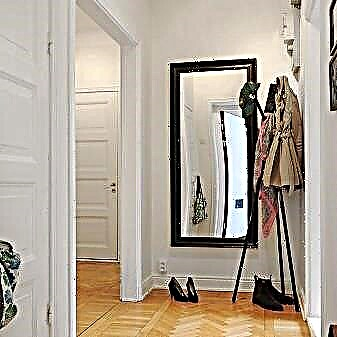

Plastic bottles can make ottomans or cabinets. They must be fastened together, for example, with adhesive tape and given the desired shape. To do this, you need to make a frame. For the foundation, you can use thick cardboard, or plywood.
To give the product an aesthetic appearance, you should use upholstery with foam rubber, fabric, faux fur or leather.


Similar is the construction of plumbing pipes. They are cut into the same length and glued together to the desired frame with glue. To give a neat shape, it is better to close them with corrugated cardboard or plywood. Inside the pipe, it is better to fill with a dense material to prevent deformation of the finished product. To do this, an old rug or dense fabric is suitable. Outside the product can be painted or upholstered with a cloth.


Original and very stylish looks furniture made from wooden boxes or pallets. You can make an unusual cabinet, a hanger for clothes, a cabinet or a shelf for shoes. The construction is very quick and easy to assemble. The finished product can be painted with paint, complemented with unusual fittings and decor. Things that are already used in the house can be used, which are no longer needed. It is enough to restore and ennoble them. You can use old doors, tires, vintage suitcases and chests, and even window frames.
Dimensions
The dimensions of the future environment depend on the size of the room. In large rooms, you can afford to put a large wardrobe, dressing room, shelves and sofa. The street bench and the lantern in the interior look original. All designers dream of furnishing a large room, since the flight of fancy in this case is unlimited, and you can allow yourself to realize any ideas.
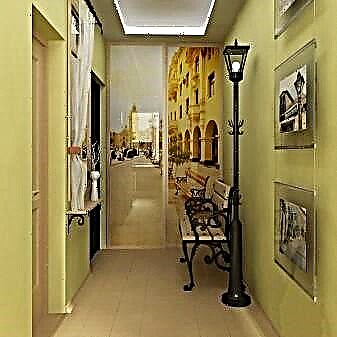

For medium sized solutions with a standard set of furniture for the hallway. It can include a small wardrobe, a small seat, a cupboard or chest of drawers for small items, as well as several wall shelves.

The most inconvenient option is a small space. It needs to fit everything you need, but also not to clutter up the entire room with furniture. In this case, a mini-hall will do. For clothes, you can use a wall-mounted flat hanger, for shoes - vertical structures, put a small pouf as a seat, and think of a small shelf for little things. A great solution for storing things will be mezzanines that are fixed under the ceiling.
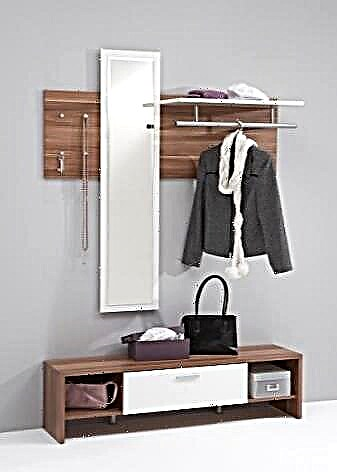
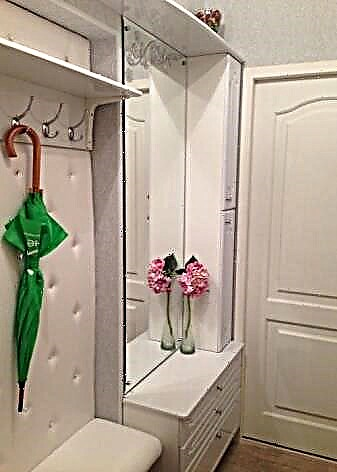
The color of the future hallway can be any. This is one of the main advantages of independent design. The finished product can be painted, pasted over with ordinary wallpaper or canvases with photo printing, decorative stickers, film. If you want to emphasize the natural beauty of the tree, you can simply varnish it, or artificially age it by designing furniture in retro style.

When choosing a color, it is better to stay in light shades, as the hallway is often small in size, and dark furniture gives the impression of a cluttered space.
For the same purpose, the entrance must be with a mirror, and, the more mirrors the better. They will help to visually enlarge the room.
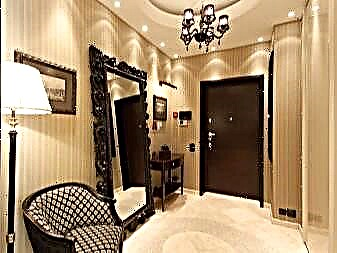

Step-by-step instruction
It is better to begin the manufacture of the hall with the simplest element - the curbstone. So that during the work you don’t have to correct errors, and the finished product subsequently only pleased, you need to carefully think through each action in advance and adhere to the plan:
- determine the desired height of the product,
- saw out the same side parts from the furniture panel 2, according to a certain height,
- we cut out the corner at the bottom of both parts, if there is a plinth, and the product will stand tight against the wall,
- cut the corner down a bit so that the upper part is narrower,
- saw out the bottom base and the lid from the furniture board, according to the selected width,

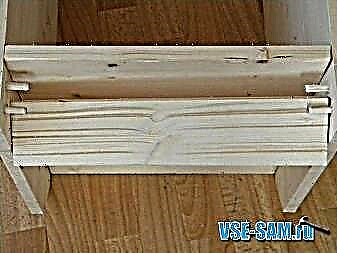
- we connect the sidewalls, the lower and upper base with the help of fasteners (the lower base should be located a few cm above the floor). You can also make a socle from the furniture board, which will close the gap between the floor and the lower base,
- make the back of plywood and fasten it with fasteners,
- we cut out a door from a furniture board. It may not be at the full height of the cabinet, but lower, then a drawer will fit above it,
- make holes in the cabinet for the door and fasten it with hinges,


- we make a box from a furniture board. The bottom can be cut out of plywood. The front should be slightly higher than the rest of the parts so that the contents of the drawer are closed. We fasten the details of the box with screws,
- we attach the guides to the drawer and the cabinet, carefully taking measurements,
- if necessary, we cut out the shelf, we mount for it,
- we collect the product and attach the handles.
A large closet is done in a similar way. If you plan to store clothes in it, you need to think about its depth so that the shoulders can fit. If the space does not allow you to make the furniture of sufficient depth, then for this you can choose the end hanger, which is suitable for shallow cabinets.
If a sliding wardrobe is planned, the frame is assembled similarly to a pedestal, except for doors. Guides for doors that occupy 10 cm are attached to the lower and upper bases, so all shelves and drawers are made 10 cm smaller than the sidewalls in depth so that the doors can close.
Standard cabinet depth 60 cm.
In addition to the cabinet and the cupboard, you can make a wall hanger with hooks. To do this, it is enough to cut out the desired size from the shield, or several narrow boards that are connected by another transverse board. Vertical boards can be made curly, complementing them with elements contrasting in color. The hanger is complemented by hooks and a top shelf.
Another way to get a new hallway is restore the old one. Updating should begin with surfaces. They need to be well cleaned of dirt, degreased and prepared for applying paint, glue, wallpaper or film. You can update not only the surface, but also the entire structure: replace facades, fasteners, accessories, add decorative elements.
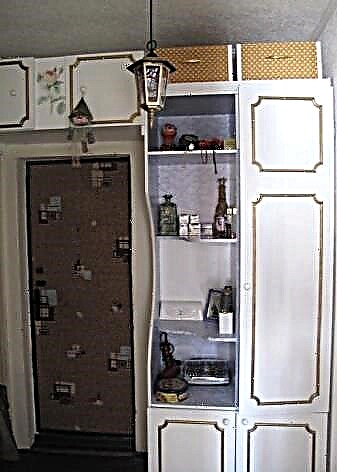
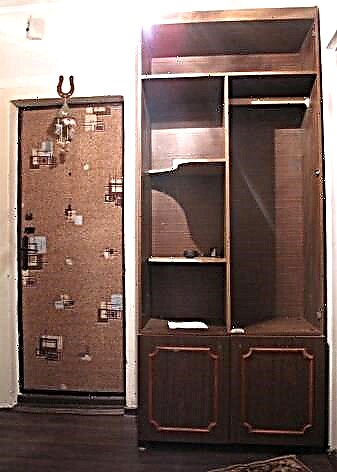
Accessories
The addition of finished furniture with accessories is the final touch in the design of the hallway. The main thing is to decide in what style the room will be executed:
- for retro style you can use antique-styled objects, vintage hooks and handles on furniture, put an old chest as a seat, hang a large mirror in a carved frame and complement the picture with an antique carpet with patterns,


- modern style involves a lot of light and space. For these purposes, it is better to use light shades, mirrors and glass. On the walls you can arrange mirror compositions, add original fixtures and put a homemade puff of bright color,


- as additional items, you can add an original hatter, an interesting shoe rack, a large plant in an outdoor pot, or arrange several flower pots in a pot on the walls,

- Do not forget about the decorative stickers with which you can paste the furniture itself, walls, mirror.
Very popular are abstract patterns or imitation windows.

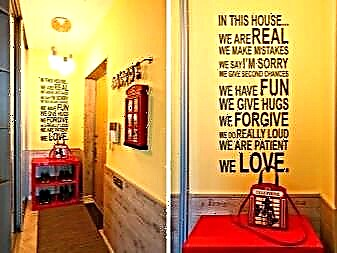


Common mistakes
When decorating the hallway yourself, some work errors that are best avoided:
- start manufacturing the hallway with the most complex element,
- choosing the size of furniture, make it “close to” the size of the walls without leaving gaps (the exception is non-mobile dressing rooms, the base of which is attached to the walls),


- get to work without making a complete calculation of all the details of future furniture,
- use the cheapest materials and accessories in your work,
- use the space to the maximum, forcing the entire room with furniture.
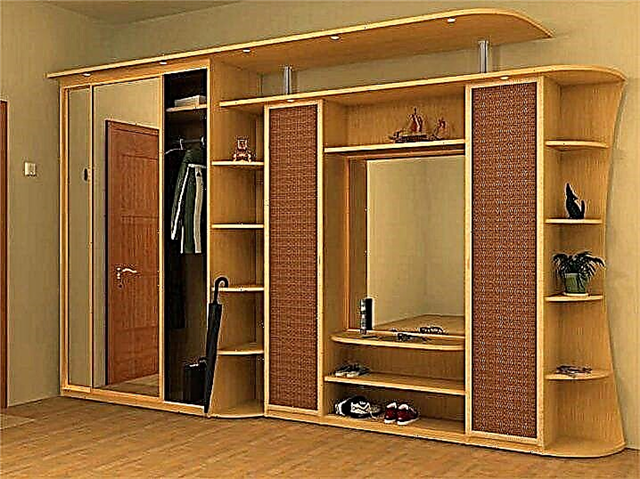
Planning
Before starting active work, it is recommended to plan the course of action. It is important to line up each item in order of importance. The sequence is as follows:
- Lighting,
- Nuances with the organization of the premises,
- Finishing materials for surfaces,
- Floor cladding,
- Arrangement of furniture.
Recommendation! Planning the design should be in the specified sequence. This will create a suitable hallway design. It’s better to draw sketchy.
Interior design options
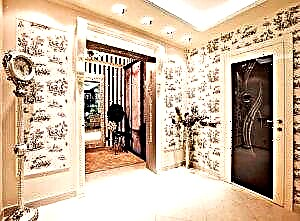
When designing, it is important to adhere to the general style. This will give the room completeness. You need to decide on the design in advance. It’s worth choosing, based on the features of the hallway. Everything matters, including the size of the space, ceiling height, shape. Then it will turn out to find the most suitable option, which will hide the defects of the corridor, and focus on the merits. The number of different stylistic directions is large, which allows us to consider several possibilities.
Regardless of the chosen design, remember that you should not clutter up the small rooms with an abundance of elements. Leaving huge voids in spacious rooms is also not necessary.
Varieties of hallways

There are several types of corridor. Creating a hallway with your own hands, you should study each view. The following are distinguished:
- Box. It is found in brick Khrushchev. A small area is equipped with a passage to the bathroom and a door to the remaining rooms. There are no problems with the facing, as well as with the choice of design. Difficulties can appear when arranging furniture. Due to several passes, it’s difficult to choose a place for the closet,
- The corridor. Can be found in a panel building. It is often long and narrow. When decorating, it’s important to properly organize the space,
- Nora with a snorkel. The narrow space has a tap for the bathroom. It is crowded. Repair is difficult due to the limited small area,
- Coupe. It may resemble a box from which a corridor departs, or a winding, stepped hallway. The organization of the room is more important than the finish. The latter will fulfill the role of final design.
Lighting and ceiling
Light is recommended to choose enveloping. The place is not suitable for emphasis on the game of shadows. Otherwise, the room will become visually even smaller and darker. Therefore, light must be scattered.
Choose light colors for the ceiling. The most popular is white. A simple and economical option is acrylic enamel. But it requires a perfectly flat surface. Otherwise, with certain lighting, defects in the ceiling will become noticeable.
You can use a mirror ceiling or stretch fabric with a shiny bar. It is important to choose the right color scheme. This option is suitable for a not very high ceiling. Do not use a shiny surface in a narrow visit or hole to avoid discomfort.
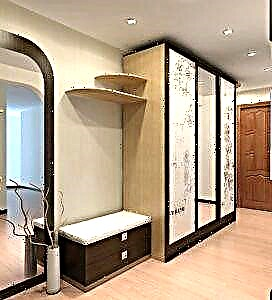
A good solution is a multi-level design. Not suitable for a low ceiling, in other cases it looks spectacular. It has many design options, differs in the average level of labor and material costs. To achieve a shadowless effect, you should build an oval niche with lamps. They should shine crosswise with a small angle in relation to the ceiling.
If the canvas is even and colored, fluorescent lamps arranged linearly are suitable. An excellent solution would be a stained-glass ceiling with interior lighting.It is characterized by high cost and complexity of work. But you do not need to simulate the indicated option with a tension structure with lamps hidden inside. Since there is no ventilation, which will provoke overheating of the meter sources. The lamps quickly burn out, and the canvas becomes stained and loses its former appearance.
Colors and textures
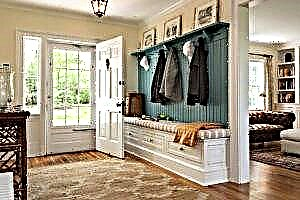
Architectural delights are not suitable for the corridor. The need for a visual increase in space leads to the creation of an interaction between the palette and texture. You need to select the gamut correctly. The predominance of cold tones can create an ice cave in the home. In winter, this room will be uncomfortable.
Some resort to the separation of surfaces, which limit the space for its visual increase. To use the solution is relevant provided a decent amount. If it is not enough, it is better to abandon such an idea, especially in combination with contrasting tones that create excessive color with a crushing effect.
For the floor, a rough dark tone texture will not work. It is better to refuse black. Sex can be contrasted if the top is light but not absorbent. When choosing the right texture, you need to avoid gloom and a heavy effect. Do not abuse stone trim. This design is suitable for spacious rooms.
Porcelain Tiles

Suitable for walls thanks to a variety of textures and rich design. There are models with drawings and beautiful patterns. You can choose for any interior. It is not necessary to complete the walls completely. It is enough to use about 100 cm from the floor.
Tile
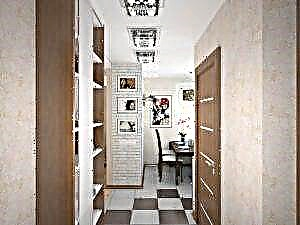
For the walls of the corridor, the product is rarely selected. It is most often used in the kitchen or in the bathroom due to its durability and long service life. The surface of the tile reflects the light and polarizes it, which gives the room a still look. But if you want to use the tile, it is better to revet only a meter from the floor. Then the described effect will not occur, and the vulnerable surface area will be protected.
Organic board cladding

Not the best option for hallways with lack of natural light. This will lead to the manifestation of disadvantages of organic tile cladding:
- Liquid and dirt will accumulate in the seams. The corridor is characterized by increased pollution and you won’t be able to avoid such a minus,
- Susceptibility to mechanical damage,
- Reflection of light and its polarization.
When using this design, you need to choose a product of at least 32 classes. It must have special resistance to damage, humidity, temperature changes.
The liquid wallpaper

They are a dry composition that must be diluted according to the instructions and treated with a surface like standard plaster. The product creates a beautiful effect. The coating is porous, therefore it should be treated with acrylic varnish. It may seem that the technology for creating liquid wallpaper is quite simple. However, this is not at all true. Therefore, it is not recommended to try to make the product at home. It is better to trust already prepared ones, which bring to the desired consistency before facing.
Venetian plaster

This type of lining is obtained from a standard gypsum mixture with the addition of mineral powder. The latter can have a different tone, including a shade of stone chips, colored sand. From plastering professionals are able to create real works of art.
You can prepare the lining with your own hands. The resulting mixture can create a simple gradation of tones. Cooking is recommended in small portions to avoid sedimentation of the filler. Stick carefully to the recipe. It is important to work with the mixture quickly.
A filler having rounded granules, including sand, is suitable for the corridor. The latter is necessarily washed and sieved. Various shades are suitable. If you use ground stone, the surface will be rough. It's easy to believe such clothes or shoes.
Furnishings

An important stage of design is the selection and placement of furniture. The main ideas should be based on the dimensions of the space. A large entrance hall allows you to choose objects of various sizes and allocate convenient places for them. Do not limit yourself to a few items, which will provoke the remainder of many voids.
A small room cannot be forced completely. It will turn out too tight. It is better to combine a cabinet with a cabinet, a hanger and a shelf. You can choose a custom-made option that will exactly match the dimensions of the hallway. If such a solution does not work, you need to use standard items. But they form a gap between the top of the furniture and the ceiling. Dust will constantly accumulate there. Therefore, it is reasonable to close the gap with foam. Necessarily a small corridor is complemented by a large mirror. This will visually increase the space.
About the mirrors on the walls
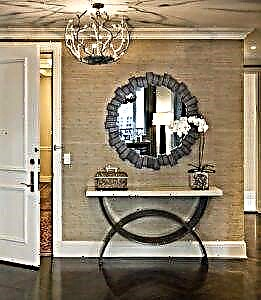
The mirror surface allows you to create the effect of space. Therefore, it is reasonable to use a similar technique in a small corridor. Additionally, you can place the LED strip. Light will add depth to the mirror surface. The effect will improve several times.




